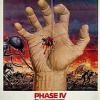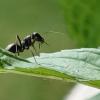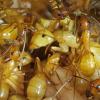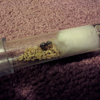Scientific Name: Camponotus novaeboracensis
Common Name: Carpenter ant
Distribution: Primarily found in the United States and Canada.
Queen size: 14-18 mm
Worker size: 7-16 mm, with a caste system involving Majors and Minors
Natural Habitat: Found in moist wood, like dead fall, lumber, and old houses. Also known to be nest under rocks in rocky locations.
Circadian Activity: Mostly nocturnal, but will still forage in the day.
Mating Flight: The major flights occur in May and June, with scattered flights during July and August. Ideal conditions are a day after rain, warm and humid. Mid-day to afternoon. But they are also known to fly in periods with no rain.
Queen Founding Method: Fully Claustral
Monogyne or Polygyne: Monogyne (Although some occurrences of polygyne colonies have been recorded)
Average time from egg to worker: Egg to larva - 20-30 days; larva to pupa - 10-15 days; Pupa to worker - 18-25 days. Time may vary with the temperature.
Recommended Temperature: 75-80°F (24-27°C)
Recommended Humidity: Mid humidity level of 30-50%. 20% and lower is known to cause deformities in pupae.
Preferred Foods: Honey water, sugar, apples, pears, oranges, mealworm/super worms, June beetles, isopods, earwigs, crickets, grasshoppers. Most sugary foods and insects are readily accepted.
Hibernation Details: In the wild temperatures below freezing are common, even up to -40C/F. In captivity it is advised to stay above the freezing point as we are unable to easily duplicate the slow cool down into freezing temps to allow the anti-freeze in their blood to work properly. Hibernation is recommended between 39F (4C) - 50F (10C).
Escape Barrier Methods: Fluon and talcum powder method work best. They are also unable to talk upside down on olive oil on a smooth surface.
Difficulty rating: Very easy to keep.
Bite and/or Sting rating: They can bite and the majors or queens are even capable breaking the skin. They are also known to dab droplets of formic acid from their gaster into the wound causing a slight stinging sensation.
Special Care or Interesting Notes: They prefer warmth and plentiful food sources.
Additional Links:
Antwiki - http://www.antwiki.o...novaeboracensis
Antweb - https://www.antweb.o...ntryName=Canada
Description: The red carpenter ant (Camponotus novaeboracensis) has a dark reddish brown colored thorax and petiole, with a black head and black gaster. Newly eclosed ants will have yellow or orange thoraxes that slowly darken into a deep red over a period of days to weeks.
Information submitted by AntsMAN
Edited by dspdrew, March 5 2022 - 6:53 PM.

























